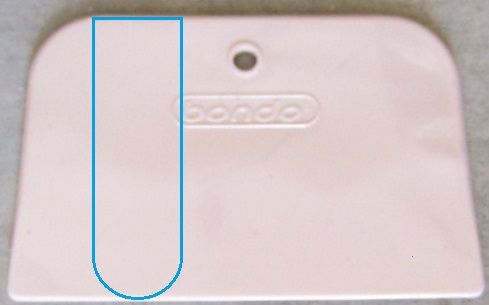JASinIL2006
Vice Admiral
- Joined
- Feb 10, 2012
- Messages
- 5,743
:welcome: Hey Merc, thanks for the tip, before its all said and done we're gonna be glassing celebritieshoto: out here stomping with the big dogs!!!
My problem was $$$, originally, i wanted to order extra fiberglass materials so i could practice before jumping on the boat. Unfortunately, Fiberglass Mats are high as a Giraffe's *** so i only got what was needed
I have a bubble roller and a corner roller and honestly i haven't really used either one. I think we just have to ride out this learning curve, here are some tips for laying up 1708 that may help out newbies coming behind us...
UPDATED 06/14/14
These tips are not in order, just random thoughts to help out noobs...
thanks to Tp for the dipping idea
- wet out the chopped strand side before placing it, by dipping in disposable roasting pan or rolling out on card board
- don't mix big batches that force you to rush causing mistakes, there's nothing wrong mixing up a pint and tabbing a few pieces at a time
- have everything ready and in the boat before you drop in that hardener
- prep your surfaces so that they are smooth and seemless, any gaps, dips and or raised areas are prone to trap air, imagine laying a blanket over a basket ball or over a hole in the ground, that area around the basketball and in the hole is air, air is fiber glasses worst enemy, well, maybe second, first would probably be mixing in the incorrect amount of hardener (mekp)
- don't be embarrassed to mix it light, the more time you have the better
- as much as you can roll from the inside out, don't just roll back and forth, roll with intent (to push air out from the middle to the edge)
- when tabbing, the most crucial area to keep air free is the part of the tab that lays on the boat
- fillet transitions should swoop or curve, no angles
- dip for fingers in resin, hold the right side of air area with right hand to keep it stationary, then use the left hand fingers to smooth out the air pockets from right to left, sometimes you can finger smooth with one hand, sometimes you cant, usually on flat areas you can but complex corners and areas as such you will most likely need two hands
- when you wet out the chopped strand side, let it set for a minute or two, then be advised that once its wetted out be careful how you handle it as it will stretch out
thanks to George for the carboard idea
I will try to update and refine this list as i go, all you gurus out there can help me tweak it (add or subtract from it) I think it would really help out new noobs coming in
One tip I learned here that helped a LOT was to brush over fillets before they harden with some catalyzed resin. I used a chip brush. The resin smooths out the surface of the fillets, leaving no 'craggies' or snags that cause air bubbles when you tab over the fillets. It's much easier and quicker than sanding/grinding before tabbing.





















